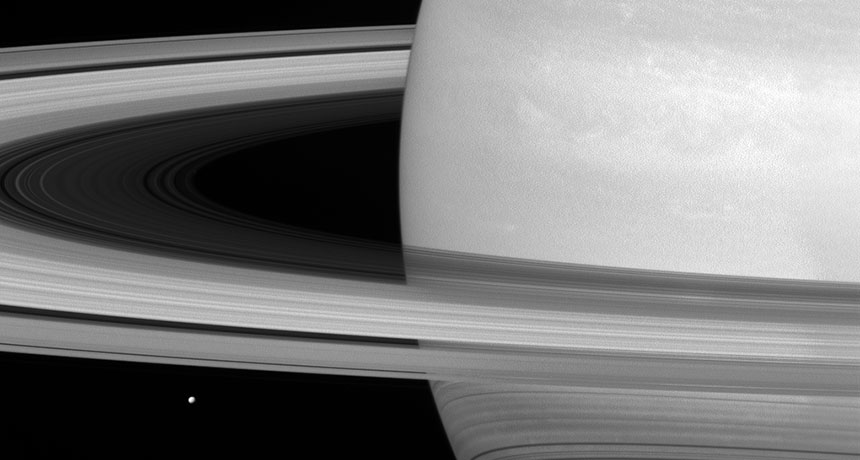Saturn’s rings mess with the gas giant’s atmosphere
Shadows and ‘ring rain’ affect electron levels in the planet’s ionosphere, final Cassini data suggest

BLOCKING THE SUN Saturn’s rings cast a shadow on the gas giant’s charged upper atmosphere, blocking ionizing rays as well as visible light.
JPL-Caltech/NASA, Space Science Institute







